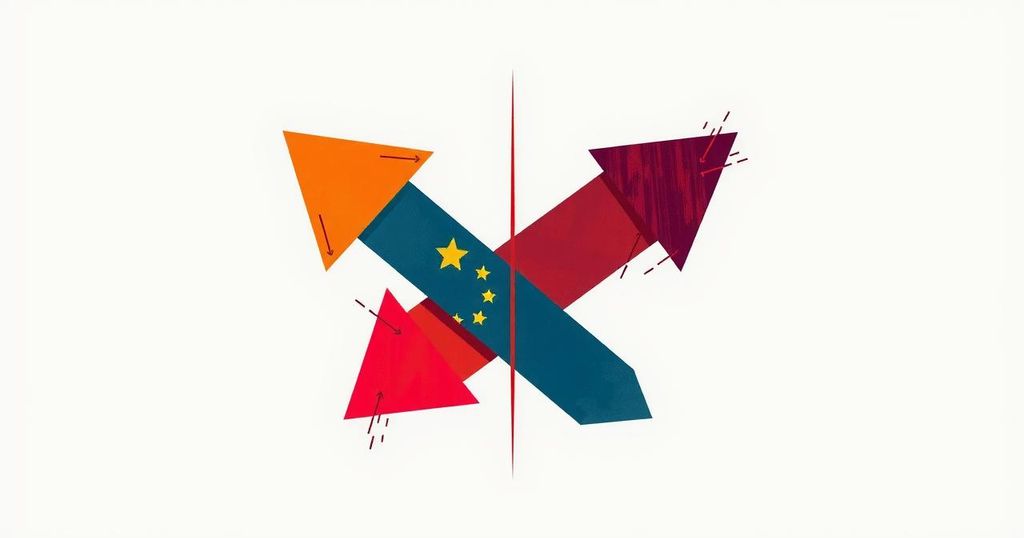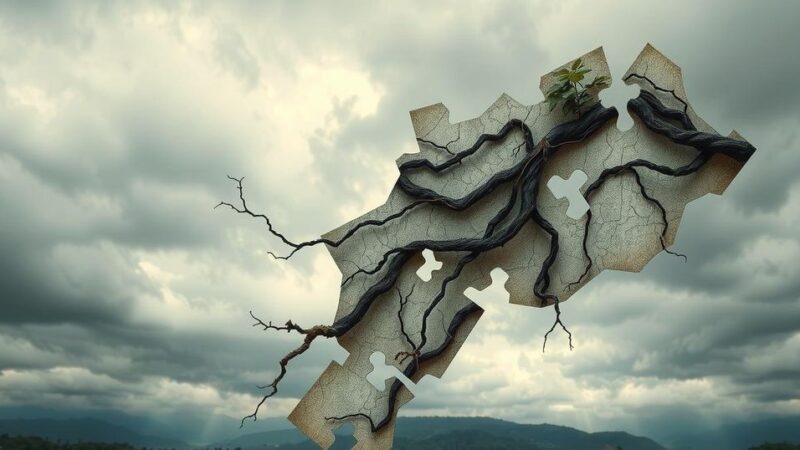Tensions rise as Rwandan President Kagame retaliates against South African President Ramaphosa’s claims that Rwanda supports M23 rebels in the DRC. The South African government suffers losses amid a deteriorating security situation. Accusations of military involvement and historical context complicate the conflict, revealing underlying geopolitical dynamics.
Tensions have escalated between Rwandan President Paul Kagame and South African President Cyril Ramaphosa, following Ramaphosa’s accusations that Rwanda supports the M23 rebels, responsible for unrest in the eastern Democratic Republic of Congo (DRC). In response, Kagame labeled these claims as deceitful and issued warnings of potential conflict if provoked.
Amidst this conflict, South African forces are engaged in United Nations peacekeeping missions in the DRC, aiming to stabilize the region which has been embroiled in violence for over thirty years. The recent deaths of 13 South African troops due to the advancing M23 militia, allegedly backed by Rwanda, have intensified domestic pressure on Pretoria.
Ramaphosa, in a written statement, attributed the tragic casualties to the actions of the M23 and a supposed Rwandan Defense Force militia. Defense Minister Angie Motshekga echoed these sentiments, declaring a warning against further aggression from Rwandan forces, stating, “If you are going to fire, we’ll take it as a declaration of war.”
Kagame refuted Ramaphosa’s statements and insisted that Rwandan forces should not be classified as a militia, stating that Rwanda is prepared to retaliate if necessary. He also contested the characterization of South African soldiers as peacekeepers, positing that the SADC mission was engaged in offensive operations: “M23 are not Rwandans, please.”
South African Foreign Minister Ronald Lamola firmly accused Rwanda of supporting the M23 rebel group, citing evidence from UN experts. Lamola stated South Africa’s commitment to promoting a ceasefire and addressing the conflict through diplomatic channels during an African Union meeting.
The DRC’s eastern region, rich in minerals and bordering Rwanda, has long been a site of conflict, with roots tracing back to the 1994 Rwandan genocide. Rwanda claims that remnants of the genocide’s perpetrators, currently in North Kivu, present a security threat to its sovereignty. The Congolese government has likewise accused Rwanda of pursuing its mineral resources under the guise of conflict management.
The ongoing discord between Rwanda and South Africa arises amid increasing tensions in the eastern DRC, where the M23 rebel group has gained ground. This region has suffered from violence for decades, exacerbated by historical events such as the Rwandan genocide and the ensuing refugee crisis. With South African troops involved in peacekeeping efforts, the stakes remain high as accusations fly between national leaders over the responsibility for the violence and the engagement of armed forces.
In summary, the confrontation between Presidents Kagame and Ramaphosa highlights the intricate dynamics of regional security and the historical context influencing current tensions in the eastern DRC. The allegations of Rwandan backing for the M23 militia deepen the diplomatic rift, while the safety of South African troops deployed in peacekeeping operations remains precarious amidst the rising violence. The conflict’s roots are deeply embedded in historical grievances that continue to shape the region’s stability.
Original Source: www.voanews.com






